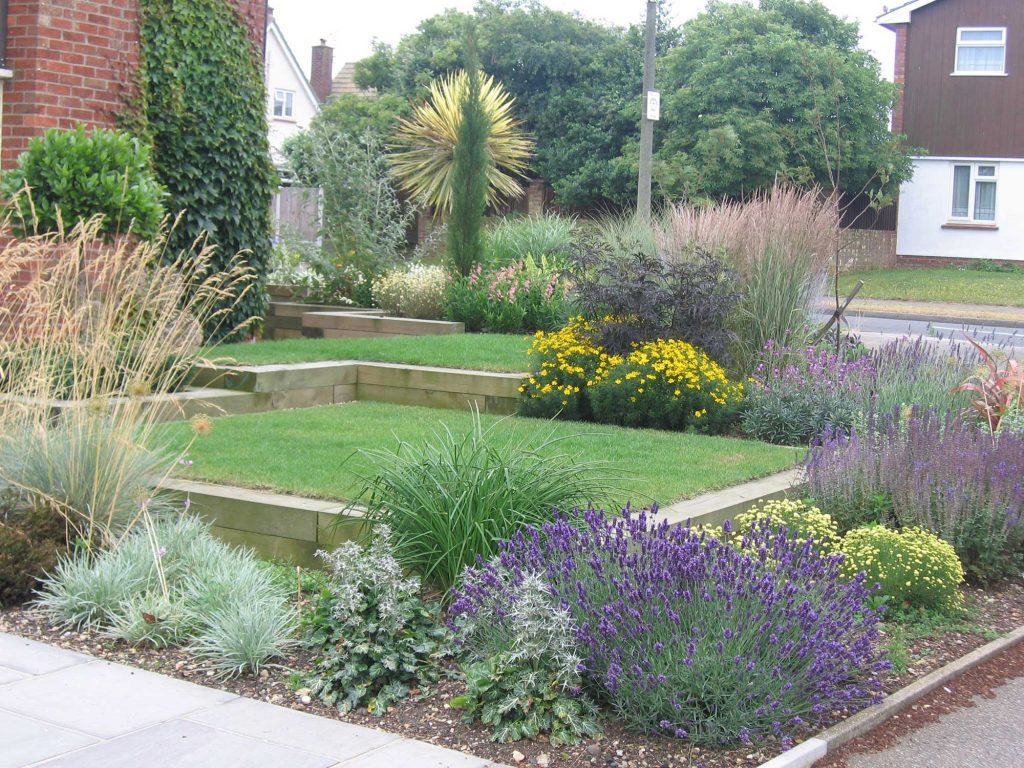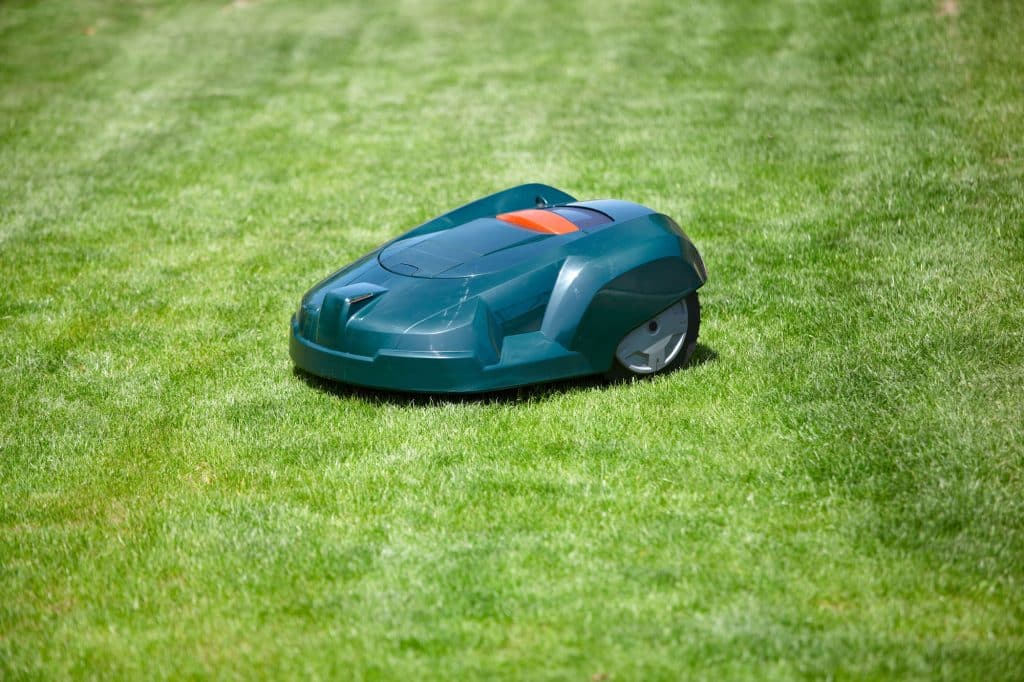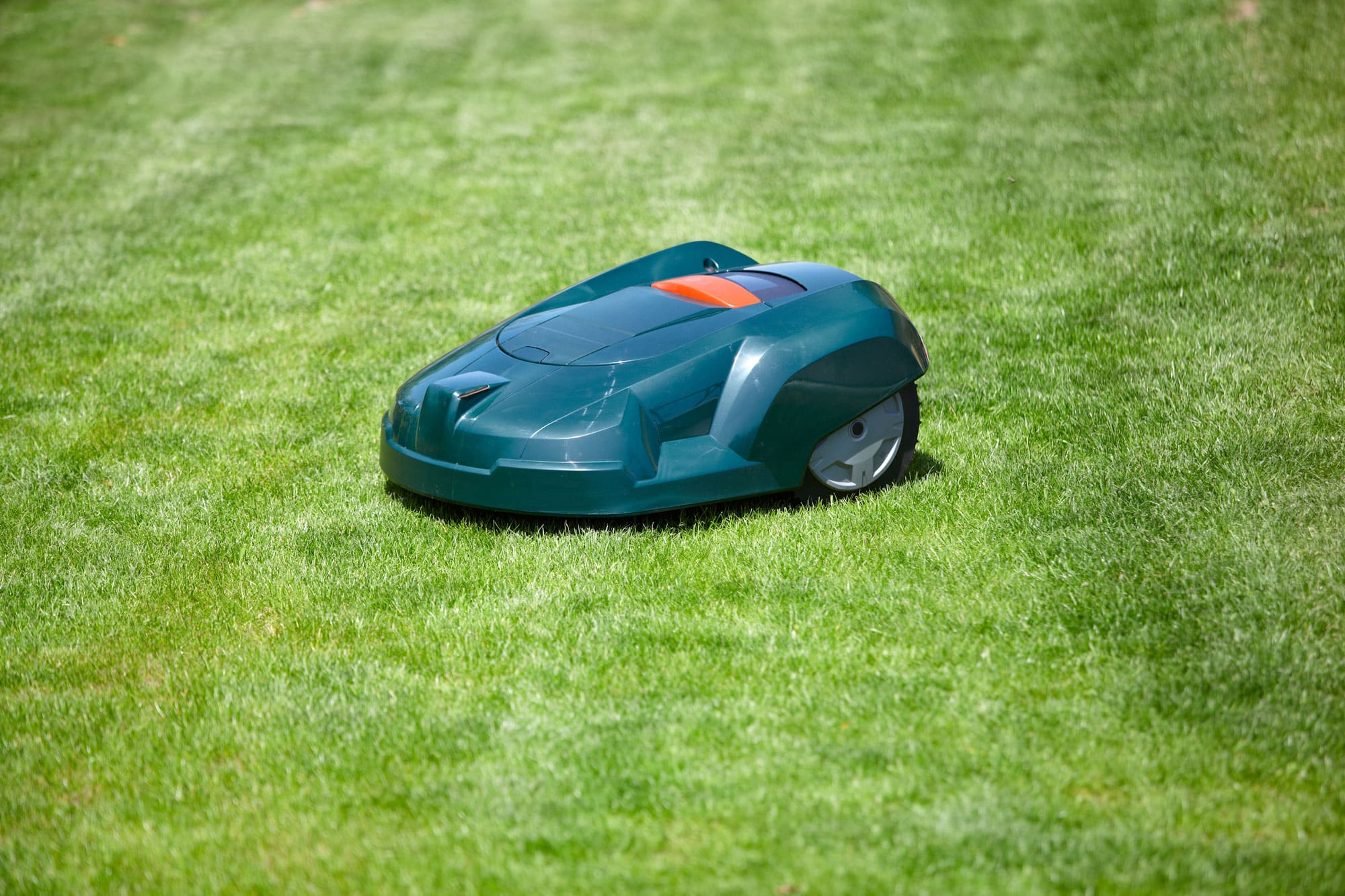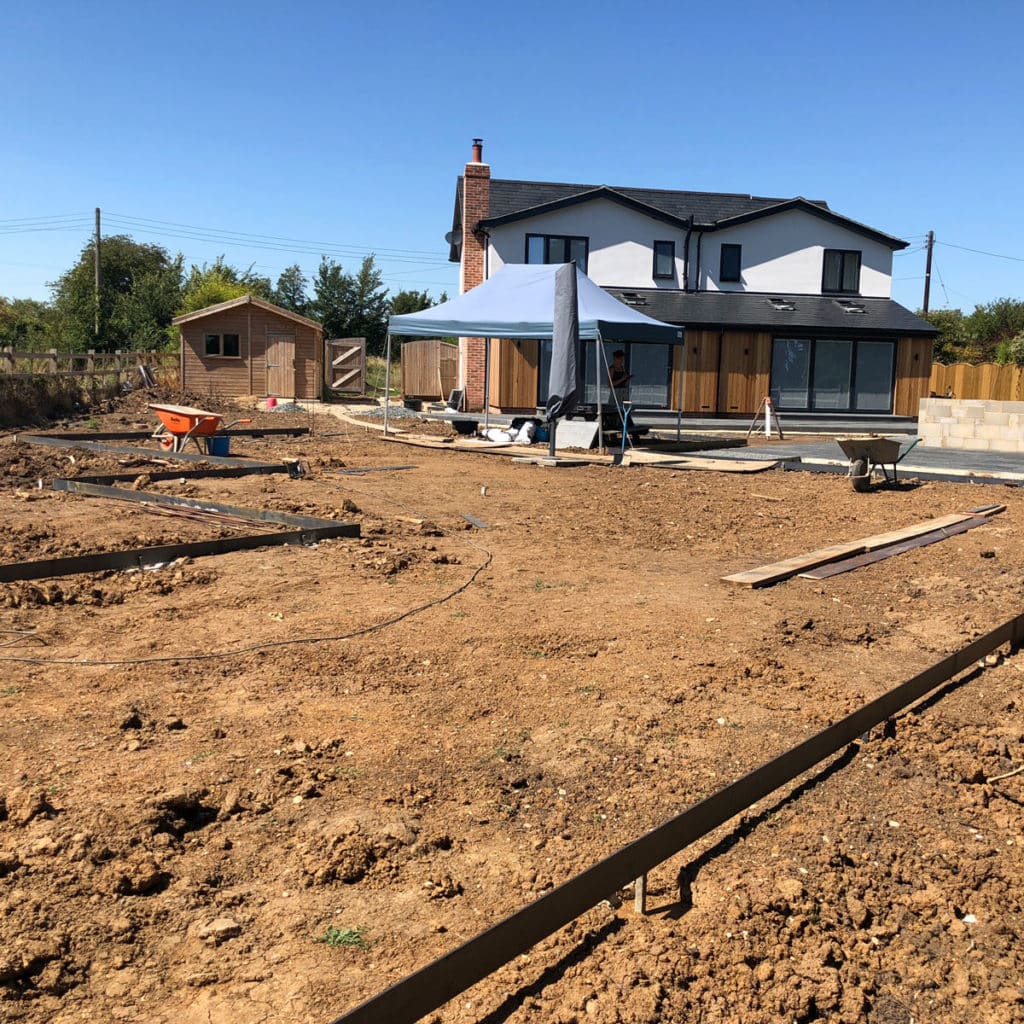17 Feb How To Get The Perfect Lawn
Top tips on creating and maintaining the perfect lawn for your garden.
Lawn creation and care is a huge subject and I’ll not be able to cover all of it in this blog, but I will post a link at the end of it to a YouTube channel that I think you’ll find helpful.
How Do You Get Your Perfect Lawn?
As landscapers we are often asked to lay turf or sow seed either to reinvigorate a tired lawn or to put the finishing touches to a garden makeover. And there can be no doubt that a perfect lawn really does make the whole garden look good. So it’s worth putting in the time and effort to get it right.
- Don’t skimp on soil preparation or levelling – these are key to establishment and growth.
- If your garden is inclined to be boggy, address drainage issues before planting seeds or laying turf.
- Install lawn edging to give you a crisp edge that will make your lawn look manicured – even between mowings.
- Choose the right type of plants and grasses both for the site and for the look and feel you want to create.
- Mow little and often – remember the one third rule.
- Feed the grass regularly for a weed free lawn (but avoid feeding if you want to create a wildflower lawn)
- Look after the soil beneath your lawn with an annual program of aeration to relieve compaction.
- Move toys and furniture around the lawn every couple of days to avoid killing the plants beneath them.
- Train pets to use a different part of the garden for toileting.
Installing lawn edging will help to keep your garden looking neat and make it more manageable. Set the level of the edging so that you can run over it with the mower, that way you won’t have the tedious job of trimming the edges every time you mow.
What Is Your Perfect Lawn Like?
Before you can make or renovate a lawn, you need to decide what you want from the end product. How do you plan to use your lawn and how much maintenance can you manage on a weekly basis. Let’s take a look at some basic types of lawns.
Utility Lawn
Most of our clients ask for a utility or family type lawn. Something that is relatively easy to care for, hard wearing, good looking, resistant to pests and diseases, and happy to survive with no maintenance for a couple of weeks while you go on holiday.
The quickest way to establish a utility lawn is by using turf. We recommend buying directly from a local grower if possible. That way the turf will arrive freshly cut and in the best possible condition. Turf is incredibly perishable, especially in warm weather. If it’s been sitting outside a DIY store for a couple of days, there is only a slim chance of that turf turning into a beautiful lawn. Ignore any discounts on old turf if it won’t make a decent lawn you’re not getting a bargain.
Look for a mixture of grass species that includes ryegrass (for durability) and fescue (for a lovely texture).
Ornamental Lawn
I think most of us secretly hanker over a perfectly flat, closely mown, velvety lawn. Imagine how something that looks a bowling green could enhance your garden. However, if your perfect lawn has fine grasses and tolerates being mown down to 6mm, it will take a lot of work to keep it looking fabulous. Cutting 3-4 times a week in the growing season with specialist mowers, frequent feeding, scarifying and aerating at least once a year, being super vigilant about common lawn diseases and arranging for somebody to care for your lawn while you’re on holiday. You need to be a true lawn care enthusiast to create and maintain an ornamental lawn.
Take extra care with soil preparation to make a lawn like this, paying particular attention to drainage. Choose a seed mix containing fescue and bent grasses, and for best results, invest in a cylinder mower. You may also want to hire a lawn care expert to help with professional lawn treatments, weed control and soil care.

Is this your idea of a perfect lawn? I love how the manicured grass makes the planting look more vibrant and interesting. This is a well-cared for utility lawn.
Artificial Lawn
I can’t say that I’m a big fan of artificial lawns, but they do have their place. Particularly if there is no time for regular mowing. However – they do need some maintenance. Brushing the ‘grass’ once a month or so will not only convince the neighbours that you are slightly ga-ga, it will prevent moss and weeds growing in your lawn. Regular brushing also perks up the pile giving it a sprightlier and slightly more natural look. If you have pets, you may also want to wash your outdoor carpet every 3-6 months with a special odour- preventing detergent.
If you are opting for artificial turf, choose a good quality make and invest in professionally installation. That way it will last a lot longer.
Species Rich Lawn
I’m pleased to say that more and more clients are asking me about species rich lawns. They want to find a compromise between low maintenance and environmental friendliness. And if you want a soft lawn to sit on that also supports a wealth of wildlife, species rich will be the perfect lawn for you.
In a nutshell, a species rich lawn contains mixture of grasses, wildflowers and low growing herbs. It only needs mowing once every two or three weeks. And in summer it will be a tapestry of colour. You may even find that as you walk across it you are treated to some wonderful scents released by the plants as you crush their leaves with your feet.
Great plants for a species rich lawn include clover, self heal, daisies, plantain, wild thyme, birdsfoot trefoil, common sorrel, lady’s bedstraw and yarrow. Create these lawns using seed or by installing wildflower turf that has been specially designed for lawns.
Low Maintenance Lawn
A truly low maintenance lawn is a bit of an elusive creature. However you can adapt your mowing regime to help weeds at bay and reduce the need for feeding.
To minimise lawn maintenance, start by preparing the soil really well. Make sure that the area drains well and has a decent depth of GOOD QUALITY topsoil. That might mean clearing buried debris and replacing heavy clay or sandy topsoil with imported soil.
Install good quality turf and water it well until it has established. Once the turf has rooted in, you can start mowing your lawn, but don’t scalp it. You’ll find that if keep the mower blades really sharp and maintain the grass at around 6-8 cm long, it will thrive. Yes, you will have to mow regularly but longer grass is better at keeping its colour, withstanding drought, repelling weeds and fighting off diseases.
Alternatively, invest in a species rich lawn. They tend to be slower growing and if you do get a few weeds in the sward, nobody will notice them.

Rather than resort to using artificial turf for a low maintenance lawn, why not invest in a robotic lawnmower. Living grass plants are far more eco friendly than plastic and a good quality battery powered mower can be automated so that you don’t need to worry about weekly lawn care.
Shade Tolerant Lawn
Growing a lawn in the shade around trees or buildings is never easy. Grass needs sunshine. It is possible to buy shade tolerant turf and/or grass seed and it will certainly help your lawn if you do make the investment.
Maintaining the grass at 6-8cm will help too – the greater the surface area of the leaves the more light they can absorb. And try to avoid inflicting too much wear and tear on a shaded lawn.
Landscaping your plot so that the lawn is in the least shaded part of the garden is an excellent idea and will make your life a lot easier when it comes to lawn maintenance.
How To Establish Your Perfect Lawn
Lawns can be grown from seed or you can lay turf. Either way has its pros and cons. If you are on a tight budget and are happy to keep off the grass for a few weeks while your lawn establishes – choose seed. That way you get a wider choice of grass species and can adapt the seed mix to suit the conditions in your garden.
If you want an instant lawn, choose turf. But please be mindful that it will need watering every day for at least a fortnight or until the roots have grown into your soil. Turf is a little more costly than seed but if you buy good quality, it will look good from day one.
The trickiest and by far the most crucial element of establishing a perfect lawn is the soil preparation. For that I thoroughly recommend that you ask an experienced landscaper for help. The soil will need to be dug over to a depth of at least 15cm, the quality may need to be improved with compost, aggregates and/or replacement topsoil and then the whole thing must be raked and levelled to perfection.
Professional landscapers have tools, equipment and muscles to make the work easier. Plus, they have plenty of experience at soil levelling, which, surprisingly, is much harder than in sounds.
Lawn Care Advice
For the very best lawn care advice, I heartily recommend that you follow the Premier Lawns YouTube Channel. Robbie has the very best way of explaining every aspect of lawn care from mowing and feeding to scarifying and seeding.
If you need help with creating a lawn and your garden is in Essex or Suffolk, the Holland Landscapes Team would love to quote for the work. Click here to contact Paul and start the ball rolling.





Sorry, the comment form is closed at this time.